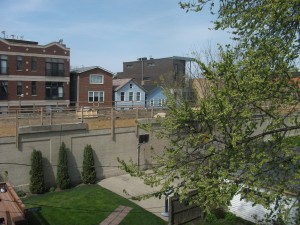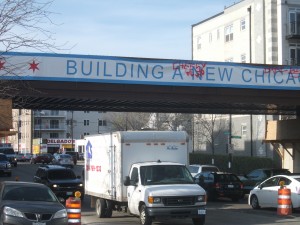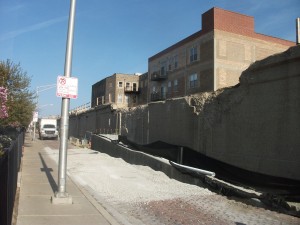Spring has sprung in Chicago, and along with it, construction progress on the Bloomingdale Trail. I can hear the hammers pounding as I write, installing guard rails at the edges of the trail. Other equipment is tearing out old rail debris and erecting access ramps.
Last summer I reported on the plans for the trail, which would become the second elevated rail trail in the nation, but also the longest. Work began in spots, but now it is obvious all the way up and down the 2.7-mile stretch that sits 16 feet above street level. Work crews have been repairing the concrete walls, replacing bridges, fixing viaducts, and preparing the landscape for improvements. In mid-April, they removed an old bridge over Western Avenue, the busiest north-south arterial passing beneath the trail, and installed a new one, that is actually an old one from Ashland Avenue, in its place. The old bridge needed replacement regardless of the trail project because its low ceiling had long been a hazard for the occasional truck that found itself just a tad too tall to pass beneath. That is no longer a problem.
No place along the trail will be more than a quarter-mile from an access ramp. Every access ramp will be ADA-compliant to ensure that those with disabilities can enjoy the linear park like all the rest of us. Bicyclists and pedestrians will all be able to enjoy the quiet vistas and street furniture of the elevated design. New public art will also be part of the equation. The rollout of most of this is expected as early as this fall, so those who live nearby—my house is little more than 50 feet south of the trail—can expect a busy, perhaps at times noisy summer as the progress continues. That is okay, at least from my point of view. What we gain in the end is far greater, a wonderful public amenity that will be a showcase of the best ways to repurpose otherwise obsolete pieces of infrastructure. What once belonged to the railroad will now belong to the people of the city of Chicago.
Jim Schwab



Trackbacks/Pingbacks